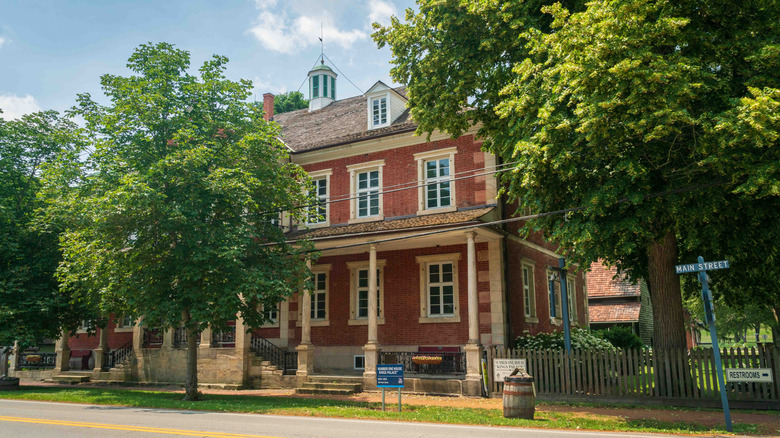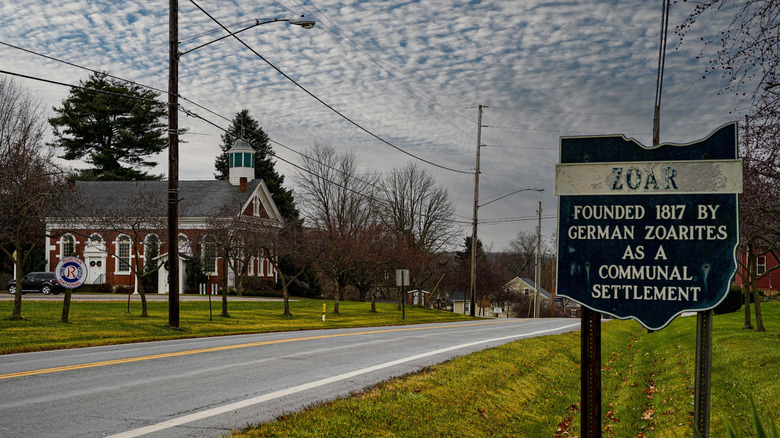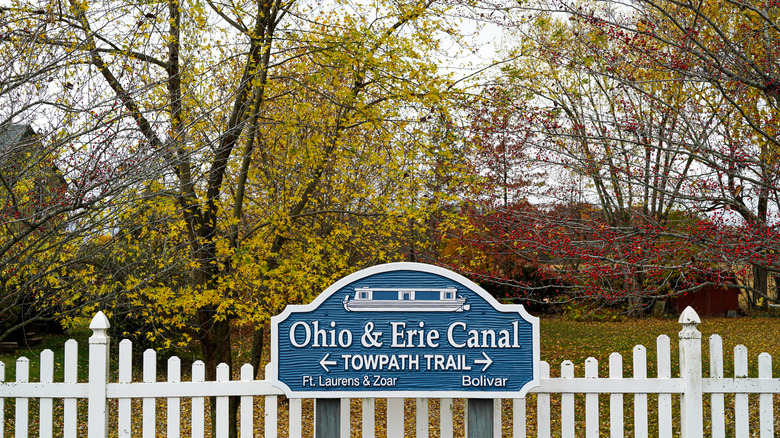
The state of Ohio is filled with many wonderful destinations that are a bit off the beaten path. These include Millersburg, one of the state's most enchanting small towns, filled with handcrafted treasures, and Milan, a cute walkable village filled with antique shops and historical charm.
About an hour outside of Cleveland lies another fascinating destination, which boasts a progressive history. This historic village was established in 1817 when a group of European immigrants, fleeing religious persecution,
founded their own community, Zoar, Ohio. Today, you can visit and learn about the values, history, and architecture of this communal village.
Led by Joseph Michael Bimeler, the Society of Separatists of Zoar is one of the first German settlers in the area. According to the Ohio State Connection, the group was founded with approximately 200 members who were originally from a region in Southwestern Germany where Lutheranism was the state-mandated religion. The Zoarites refused to participate in war and rejected traditional religious ceremonies like weddings. As a result, they were persecuted and faced punishments like imprisonment. The group immigrated to America in search of freedom to practice their beliefs and found it.
Read more: The Most Charming Cobblestone Streets In America That Will Take You Back In Time
Building The Historic Village Of Zoar

The religious refugees found their way to Philadelphia, Pennsylvania, where they met Quakers who helped them secure jobs and a loan for 5,500 acres of land in Northeast Ohio for $15,000. Named after a biblical town, Zoar became a safe place for the group to practice their progressive beliefs, including gender and racial equality.
By 1818, the historic Village of Zoar had begun construction, and 200 more people had fled Germany to join the Society of Separatists. After two harsh winters, in the spring of 1819, the group decided that the best way to move forward successfully was to become a communal society. Members agreed to share everything, including work, property, and income, as well as domestic responsibilities such as cooking and child-rearing.
In 1822, the Zoarites became concerned that they would outgrow their resources, so the community agreed to a period of eight years of celibacy to help manage the population. Parents of children between the ages of 3 and 14 often lived separately, so that they could prioritize their work. Once the children moved back home, they had to focus on school and work. For most of the 1820s, the Zoarites worked on digging up the 7 miles of the Erie Canal that ran through their community. They earned $21,000 and were able to pay off the property loan, allowing them to continue building the village.
Travel Back To The 19th At The Historic Village Of Zoar

Eventually, the village contained a church, brewery, furniture shop, bakery, gardens, and more. In 1833, the 40-room Zoar Hotel was constructed, and it remains open to the public for tours today. By the 1850s, the community had accumulated over $1 million in assets; however, in 1853, Bimeler passed away. As more original members died, the society moved away from its initial mission, and in 1859, the Zoarites voted to disband the community. Today, the settlement remains as a pristinely preserved living museum.
A visit here allows you to travel back to the 19th century when these early American settlers wanted to create a utopia. There are various ways to explore, including various tours and hands-on experiences for homeschooled students and Blacksmith classes for adults. "This is an amazing piece of Ohio history that should be experienced by everyone. The buildings and people dressed up as characters from yesteryear add to the atmosphere here," shared one Tripadvisor reviewer.
The town was added to the National Register of Historic Places in 1969 and became a National Historic Landmark District in 2016. The buildings are "owned and managed by the Ohio History Connection, the Zoar Community Association, and private residents, including about 75 families," according to the Ohio History Connection website. The Site Manager, Tammi Mackey Shrum, added, "It's one thing to have a historical building. But it's pretty amazing to have an entire village of historic homes."
If you want to continue exploring the many delightful getaways in Ohio, check out the most charming small towns the state has to offer.
Ready to discover more hidden gems and expert travel tips? Subscribe to our free newsletter for access to the world's best-kept travel secrets.
Read the original article on Islands.













